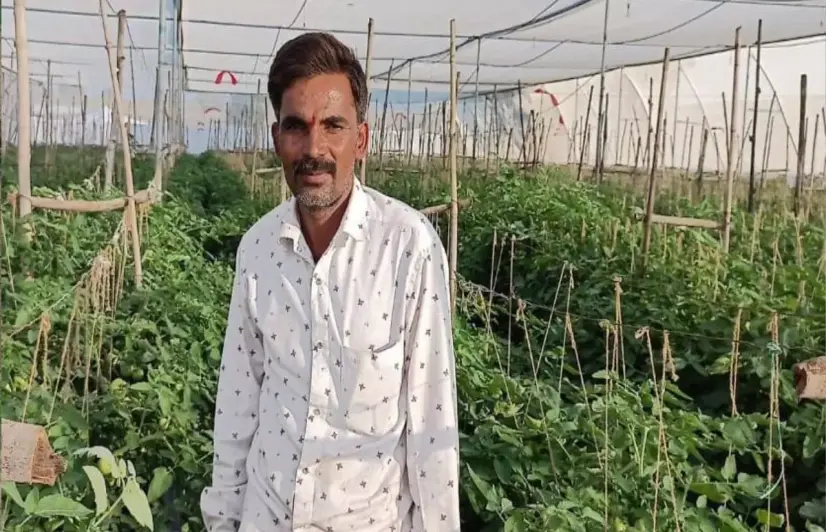Tupewadi embraces change, earns crores from vegetable seed business

Tupewadi embraces change, earns crores from vegetable seed business
Five years into the Project on Climate Resilient Agriculture, farmers of this Maharashtra village have nothing to regret. They still grow cotton, which is prone to pest attacks, but do not depend on the crop for a living
Jalna, Maharashtra: From cotton to high-value vegetables, the farmers of Tupewadi village in the drought-prone Jalna district of Maharashtra have come a long way. When cotton was their main crop, pest infestation gave them blighted harvests, which eventually forced them to migrate to the sugarcane belt of the state to work as cane cutters.
That was five years ago. Now, they have reversed their fortunes by becoming vegetable seed growers under the Project on Climate Resilient Agriculture (PoCRA), implemented by the state agriculture department and the World Bank in 2018 to develop a drought-proof and climate-resilient strategy for agriculture. Farmers of Tupewadi made use of the PoCRA by becoming beneficiaries of the Nanaji Deshmukh Krishi Sanjeevani Yojana.
Hundreds of shade net houses dot the fields of these small and marginal farmers, making the village with 600-plus households undergo a radical transformation — from being a parched and irrigation-constrained area to a thriving farming community. By regulating the entry of sunlight, moisture and air, greenhouses create an appropriate microclimate for the crops and protect them from heat, rain, storm and pest attack. Drip irrigation meets their water requirements.
Once the vegetables are harvested, seeds are extracted and processed. Seven top seed companies in the country — Mahyco, Syngenta, Nath Seeds, Monsanto, Bayer, Agro Biotech and Nirmal Seeds — buy from them and sell under their brand names.
Outsiders refer to Tupewadi as ‘shade-netchi gaon’ (shade net village). “Two decades ago, we began growing vegetables in bamboo shade nets provided by seed companies. However, bamboo poles had to be changed every season. Now we have permanent shade nets with galvanised iron frames and cladding material,” informs Arjun Sagaji More, whose family owns 17 acres and has shade net houses spread over one-and-a-half acres.
However, it was the PoCRA that
transformed the village, located 18 km from Jalna
town, into a state-of-the-art vegetable seed growing centre. Farmers got to
know about the scheme through the media and WhatsApp groups,
and from the extension workers who visited them.
With time, they entered into buyback agreements with seed companies, ushering in economic prosperity that is visible in the pucca houses lining the village located in Badnapur taluka. Children of these households study in English medium schools and every male member rides a two-wheeler.
Seeds of growth
Under the Nanaji Deshmukh Krishi Sanjeevani Yojana, every farmer beneficiary gets a 75% subsidy to raise a shade net house, which
lasts for five to six years. “Farmers can choose the shade net’s size depending on
the amount they can contribute. The subsidy component is available for
structures covering up to 20 gunthas. A 10 guntha (10,000
sq ft) shade net house costs Rs 4 lakh and the farmer has to bear around Rs 1 lakh from it,” Venkat Thakke, Taluka Agriculture Officer,
Badnapur, tells 101Reporters.
As per Thakke’s estimate, each seed grower makes Rs 4 to 5 lakh annually.
Hence, the business in Tupewadi is worth around Rs 20 crore.
The year begins with cucumber and ends with chilli, with each variety of vegetable taking around four months to mature. “We grow chilli, cucumber, tomato and bitter gourd. The seed companies provide seeds or seedlings for cultivation. With every new crop, the mulching sheets are changed and the rows treated with fungicide and fertilisers,” says Pankaj Rathod, an agriculture graduate from Dr Panjabrao Deshmukh Krishi Vidyapeeth, Akola, and owner of a shade net structure spread over half-an-acre plot. “Each year, the companies increase our earnings by 10 to 20%,” he beams.
Not a beneficiary of the state’s irrigation schemes, Tupewadi takes
water conservation very seriously. All irrigation activities are dependent on bore
wells and shet tale (farm
ponds), which are
replenished by rainfall (around 700 mm usually) that the
taluka receives.
The residents have collectively dug up a 20-hectare-long continuous contour trench, raised two earthen and seven concrete dams, built a 700-hectare embankment and deepened 30 drains to catch the rainwater over the course of many years.
Around 150 farm ponds ensure water for crops growing on the open fields. “Shet tale helped us double our income. When not busy in the shade net houses, we devote our time growing cotton, soybean, bajra (pearl millet), jowar (sorghum), tur (pigeon pea) and groundnut. We use either drip or sprinklers for irrigation. For harvesting, we engage workers from neighbouring villages,” says Arjun More.
Though erratic weather has been affecting their other crops, seed
farming has been helping them tide over the crisis. Last year, particha paus (retreating monsoon) damaged kharif (June to November) crops in Maharashtra. The high-intensity rains, which are
increasingly lasting longer, hit small and marginal farmers hard. The districts
in Marathwada and Vidarbha regions were severely affected.
On the other hand, bollworm attacks have emerged as the biggest problem for cotton farmers. Pink bollworms infested nearly 32 lakh hectares of cotton crop in the state last year.
Edited by Rekha Pulinnoli
Cover Photo - Farmer Gajanan Bhikaji in his shade net house (Photo sourced by Hiren Kumar Bose, 101Reporters)
Would you like to Support us
101 Stories Around The Web
Explore All NewsAbout the Reporter
Write For 101Reporters
Would you like to Support us
Follow Us On

.jpg)



